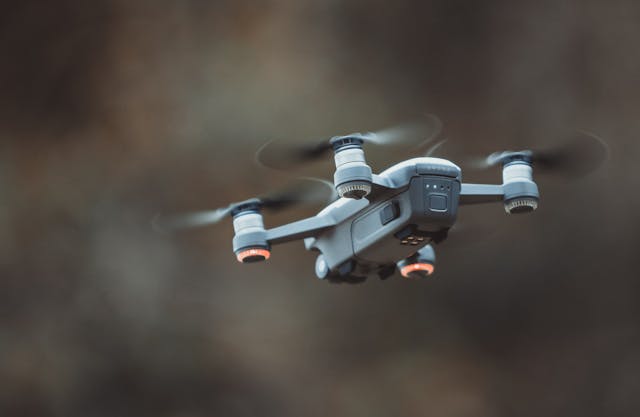Elevating Perspectives: How to Navigate the Drone Industry
In the swiftly evolving landscape of technological advancement, unmanned aerial vehicles (UAVs), commonly known as drones, are at the forefront of a revolution that is transcending traditional industry boundaries. Their multifaceted utility across various sectors, from aerial photography to precision agriculture, infrastructure inspection, and beyond, signifies a paradigm shift in operational applications.
The demand for adept drone operators highlights a lucrative career path, underscored by the necessity of specialised training and licensure. This guide highlights drone training, providing the steps towards a professional qualification and the various opportunities within this dynamic industry.
The Pioneering Era of Drones: A Multidisciplinary Revolution
The advent of drone technology has heralded a new epoch in several industries, transforming conventional practices with its unparalleled capabilities for efficiency, safety, and cost-effectiveness. The application of drones extends beyond mere recreational use; they are now pivotal in:
- Cinematography and Photography: Revolutionising the realm of visual storytelling, drones enable captivating aerial cinematography, previously attainable only through significant expense and logistical complexity.
- Agriculture: Drones elevate agricultural practices by providing detailed aerial surveys, facilitating targeted crop treatment, and optimising resource management, thereby enhancing yield and operational efficiency.
- Emergency Services: In search and rescue operations, drones offer a rapid response mechanism, accessing remote or hazardous terrains to aid in life-saving missions.
- Infrastructure Inspection and Surveillance: Drones play a crucial role in the meticulous inspection of infrastructure and surveillance, ensuring safety, and regulatory compliance with an added layer of efficiency.
- Delivery Services: The exploration of drones in delivery services aims to redefine logistical frameworks, promising speedier, environmentally friendly, and cost-effective parcel delivery.
Foundational Aspects of Drone Operation
For individuals targeting Australia’s drone sector, understanding drone classifications and necessary licenses is critical. These classifications, based on weight, dictate allowable activities, operation locations, and required certifications:
- Micro (250 g or Less): Predominantly for recreational or light photography use, micro drones offer an accessible starting point with minimal regulatory constraints.
- Very Small (More than 250 g, but not More than 2 kg): Suited for beginners, very small drones are common in real estate and event photography. They provide a practical foundation for drone operations.
- Small (More than 2 kg, but not More than 25 kg): Central to commercial uses, small drones handle tasks like agricultural monitoring and infrastructure inspections. Operators need a thorough grasp of regulations and specific licenses.
- Medium (More than 25 kg, but not More than 150 kg): For specialised tasks requiring heavy payloads, medium drones demand advanced training and certification due to their operational complexity.
- Large (More than 150 kg): Used in highly technical fields, large drones require extensive training and strict adherence to regulatory standards due to their potential airspace impact.
Understanding these weight classifications aids in identifying the appropriate sector entry and in achieving the necessary qualifications and compliance.
Regulatory Navigations and Licensure
The Australian Civil Aviation Safety Authority (CASA) governs the drone sector, instituting regulations to ensure the safety and legality of operations. To venture into professional drone piloting, several licenses and training courses are paramount:
- Remote Pilot Licence (RePL): A cornerstone for commercial drone operation, the RePL furnishes operators with the requisite knowledge and skill set for safe and lawful drone navigation.
- Powered Lift VTOL Training: This training caters to operators of vertical take-off and landing (VTOL) drones, expanding their operational versatility.
- Night VFR RPAS Training: Tailored for nocturnal operations, this training equips pilots with the expertise to safely conduct drone flights under night-time conditions, thereby broadening the scope of drone applications.
- Beyond Visual Line of Sight (BVLOS) Training: This advanced training is critical for conducting long-range operations, enabling drones to operate beyond the direct visual range of the pilot, essential for extensive mapping and inspections.
Pathways to Professional Drone Piloting
Transitioning into a proficient drone operator transcends the acquisition of technical skills; it necessitates a profound understanding of the target industry, ongoing adherence to evolving regulations, and a commitment to continual learning.
Engagement in professional communities, participation in industry conferences, and regular practice are indispensable for honing one's skills and enhancing employability. Further, specialising in specific drone applications or sectors can significantly distinguish one in a competitive marketplace.
Conclusion: Navigating the Future Skyward
The growth in drone technology marks a significant advancement in the operational capabilities of various industries. For those interested in a career in this cutting-edge field, becoming a drone operator offers not just the thrill of flying but also the opportunity to lead in innovation.
Success in this field requires thorough training, a dedication to excellence, and the ability to keep up with rapid technological changes. The potential for career growth in drone operations is as broad as the sky, with professionals not just flying drones but also exploring new possibilities.
Their work contributes significantly to areas such as emergency services, environmental protection, and the broader economy. As we explore these new opportunities, the future of drones is limited only by our creativity and ambition.

